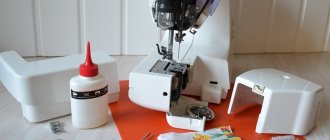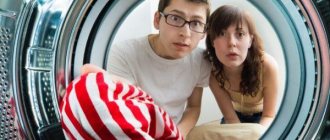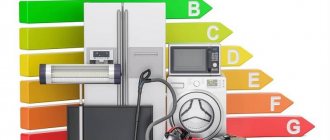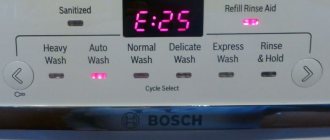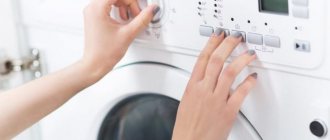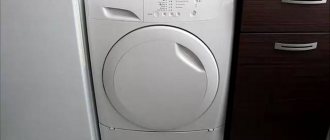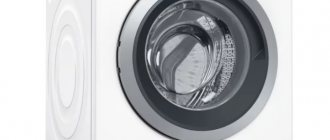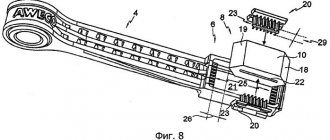In fact, any, even the simplest sewing machine can help you create a masterpiece. After all, the era of the great couturiers occurred in the second half of the 19th - early 20th centuries, when sewing machines had just come into use and were quite simple. There was no talk of computer control or electric drive, but it was in those times that such great masters as Charles Worth, Elsa Schiaparelli and Coco Chanel lived and worked.
At the same time, it is foolish to deny that a good and correctly selected sewing machine significantly saves the time, effort and nerves of the master. How can you make the right choice, not get lost in the huge number of companies and models, choose from the list of functions what you need, and not pay extra?
Let's try to figure it out. First, decide exactly what you need the machine for. Do you just want to have it at hand so that you can shorten too long trousers yourself without having to run to the tailor every time, sew up a jacket torn by a child and cut a new curtain, and you are unlikely to aim for anything more? Maybe you have a desire to sew carnival costumes for children - or are you ready to take a closer look at your wardrobe? If you are going to sew, then what? Summer dresses made of light fabrics, or coats and harsh jeans? Or maybe you are mainly focused on knitwear? Having decided, you can begin to choose the optimal model for your purposes.
Let us define the points on which a choice must be made. Firstly, this is the manufacturer, secondly, the type of sewing machine, and thirdly, the necessary set of functions that will determine the specific model. Let's start with the first one.
⇡#Manufacturer
Here, as in any other field, there are market leaders and little-known companies.
The most famous are Minerva, Bernina, Janome, Pfaff, Brother, Singer, Husqvarna. The choice among leading manufacturers is largely determined by personal preferences, the availability in the store of a selection of the machines themselves and additional accessories for them. You should also take into account the availability of service centers in your place of residence - with a high mileage of the machine, this factor begins to play a significant role.
With less well-known companies, everything is not so clear. Often, with the same set of functions, a machine from an unknown company costs significantly less. But, in addition to the obvious risk of getting worse quality, here you may stumble upon another pitfall: difficulties in purchasing additional legs and components. Little-known companies often have very exotic foot mounts or bobbin sizes. Therefore, if you still decide to save money, be sure to find out which accessories are suitable for this model, and whether you will have the opportunity to purchase them without unnecessary hassle and overpayments.
⇡#Types of sewing machines
All sewing machines are divided into industrial and household. Usually a household one can do a lot of things at once, and an industrial one can do one thing - but it can do this one thing very well and for days, years, kilometers - without breaking down. At least that's the idea.
However, industrial machines are unlikely to interest you, unless you intend to open a small sewing enterprise - they are very expensive, bulky and noisy in operation - so in this material we will concentrate on household ones. Household machines are divided into:
- electromechanical,
- computer,
- sewing and embroidery
- embroidery,
- overlockers,
- cover,
- carpetlocks.
What does all this mean, and which category should you choose?
1. Electromechanical sewing machines are the simplest of all. The entire internal filling of such a machine is mechanics, that is, levers, shafts and gears. Only the motor that drives it all is electric.
Example - Minerva M832B:
- 32 types of stitches
- semi-automatic loop
- vertical shuttle
- stitch length 4 mm
- stitch width 5 mm
The undoubted advantages of this type are reliability, low price, and inexpensive repairs in case of breakdown. Conventional electromechanical machines are inferior to computer machines in the speed of operation and number of functions, since the technological design features do not allow for stitching of complex shapes, but are perfect for beginning seamstresses, or those who want to have a reliable assistant for small household needs. However, a coat, jeans, and a ball gown are quite capable of a good and properly adjusted electromechanical machine. The approximate price category of such machines is 3–5 thousand rubles. Simple, affordable, reliable.
2. Computer sewing machines are distinguished by the presence of a computer board that provides overall control of the process, which allows this type of machine to carry out quite intricate stitch programs. The movement of the needle relative to the fabric is controlled by a microprocessor. What a particular model can do depends on the amount of memory and the number of programs of this machine “brain”.
Example - Minerva DecorExpert:
- 197 types of operations
- automatic loop
- horizontal shuttle
- stitch length 4.5 mm
- stitch width 7 mm
Their starting price is approximately two to three times higher than the price of electromechanical ones. At first glance, the huge number of stitch types seems to be an undoubted advantage. These include 15 types of different loops, and chains of different flowers and leaves, and a dozen overlock stitches, and knitted seams. But take a closer look at this list and think about which ones will you personally actually use? It turns out that you don’t need some of it at all, and some of it is just numerous duplicates of the same thing with minor deviations.
Personally, I regularly use six or seven of the 56 stitches I have in my machine, and use two more from time to time. However, one cannot help but notice that this already greatly expands my capabilities in comparison with working on an electromechanical sewing machine. So don’t be tempted by the excess of functions - it’s not at all a fact that you will need all of them. Or rather, the fact is that you are unlikely to ever try many of them.
Several types of overlock stitches, a knitted stitch, a triple reinforced stitch, a knitted loop and a loop with an eye will be useful in your work - in addition to the regular loop, of course. The rest of the features are up to you, just don’t let the variety go to your head. It's a shame to pay extra money for something you will never use.
The undoubted advantage of a well-functioning computer machine is the speed and accuracy of its work. If your plans include kilometers of frills and sewing to order for 8 hours a day, a computer machine will significantly save you time and give you additional opportunities for creativity. A buttonhole with an eye is, of course, a small thing, but this little thing affects the entire look of the coat.
The disadvantages are the high price, capriciousness in setting up, and repairs, if something happens, more expensive.
3. Sewing and embroidery machines . Everything is simple here, unlike industrial embroidery machines, which can, in fact, only embroider; such combines often combine two functions.
In my personal opinion, budget versions of sewing and embroidery machines combine these functions very poorly. They are too capricious compared to regular sewing machines, and compared to full-fledged embroidery machines, they are too limited in embroidery capabilities. And more expensive models are also scary in price. Therefore, I recommend considering this class of machines exclusively as embroidery machines and purchasing them based on these purposes.
Also, don’t think that if you buy an embroidery machine for 100-300 thousand, you will immediately create a masterpiece. Embroidery on a sewing machine is also an art that needs to be learned. In courses or independently, using books or online lessons. In general, working with it is somewhat reminiscent of working in Photoshop. You can go to a specialized website, type in motifs drawn by someone there, quickly read the instructions and glue them together as best you can, adding stars and hearts with a stamp. But if you look at the masterpieces created by professionals, it becomes clear that this is not even a third of the capabilities of this tool.
So, think carefully about whether you need this, and to be honest, in most cases it is much easier and incomparably cheaper to order embroidery from a workshop that already has serious equipment and a good craftsman. Outsourcing is everything to us. Personally, this is what I usually do.
4. Coverstitch sewing machines . They are also flat-seam machines .
Designed to make an elastic flat seam used to close the hem edge of a knitted product. This whole complex verbal construction refers to that seam that you can see on the hem and sleeves of almost any T-shirt.
Among household machines, flat stitches can be made by two types: flat stitch machines and carpet lockers. A regular stitch looks the same on both the front and back sides, as the top thread is wrapped around the bottom thread (bobbin) and tightened. A flat or chain stitch looks different. It is obtained by simultaneous operation of two or more needles and loopers.
This type of sewing machine is designed to work with elastic “stretch” fabrics. If your main goal is T-shirts, swimsuits and tracksuits, this is your choice. Price category from 10–15 thousand.
5. An overlock is a machine with one or two needles, equipped with a trimming mechanism and designed for overcasting the edges of a wide variety of garments. When choosing an overlocker, you should first of all focus on ease of threading and sewing. We should also not forget about the possibility of overcasting with different numbers of threads. Most overlockers perform 3- and 4-thread overcasting, suitable for most types of fabrics, and rolled edge overcasting. On higher-end overlockers there is a 2-thread overlock designed for the finest fabrics - such as silk or chiffon - as well as for decorative finishing.
In principle, overlocking functions are also available in computer sewing machines. But a seam made with a real overlocker is much more accurate and reliable. In addition, the overlocker is equipped with knives that themselves cut off the excess allowance, leveling the edge, which significantly saves time. In general, if you sew regularly and the free space allows you to place two units, an overlocker will be a very useful acquisition, but if not, you can do without it. In any case, it does not replace a sewing machine, but only complements it. It is not intended for assembling product parts. The price for overlockers starts from 6 - 7 thousand, for 10 you can buy a quite decent model.
6. Coverlock is a relatively new invention that many are not particularly familiar with. Pfaff marketers came up with this name for their range of such machines and patented it, after which it firmly entered into everyday use. It combines the word “overlock” and the English term coverstitch, that is, “covering” or “closing” stitch. This machine can perform both overcasting of garments, and flat seams and straight chain stitch, that is, it combines an overlock and a flat stitch machine. The price for carpet locks is quite high and starts from 25–30 thousand.
Like a cover sewing machine, a carpet locker is designed to work with knitwear. The design also assumes the presence of several (from 2 to 10) upper threads and loopers, with the help of which you can create various, sometimes very complex seams, indistinguishable from industrial ones.
What to choose for working with knitwear - a carpet locker or a pair of overlockers plus a cover-stitching machine? On the one hand, a carpet locker has a larger number of loopers, which allows you to make more complex seams; it alone takes up much less space, and its high price is quite comparable to the total cost of a cover stitcher and an overlocker. On the other hand, when processing a garment, you may first need an overlock, then a flat seam, again an overlock, again a flat seam, and so on every five minutes.
In the case of two machines, this will not present any difficulty, and each time the carpet lock will have to be reconfigured from a flat seam to an overcast or overcast stitch and back. And this is a rather long and painstaking process, which even with skill takes several minutes. It's up to you to decide what's more convenient.
What types of sewing machines are there?
Masters in the field of sewing and even ordinary consultants in specialized stores need to distinguish between the types of sewing machines and understand their intended purpose. There are many types of sewing devices:
- mechanical. This type of machine is the most budget-friendly, as it has rather limited capabilities and low quality stitches. Despite this, such a machine is perfect for craftsmen who sew simple things and repair clothes for themselves or loved ones;
- electromechanical. Such machines are capable of performing a much wider variety of stitches and operations. They are more comfortable to work with and create high-quality products with the right technique. This type of machine is suitable for those who often do sewing and make money from it;
- electronic. The main advantage of this type of unit is that it allows for high-quality stitching of even the most finicky fabrics;
- computer. Programmed devices have unlimited possibilities, since they have a built-in special program that allows you not only to select the appropriate thread color, but also to warn you about an error in your work.
You might be interested in Beautiful loose and wide cut dresses
The Podolsk machine is easy to set up
⇡#Model capabilities
This question is most acute when choosing a specific model of computer sewing machine. It is with this type of machine that the number of lines often exceeds two hundred and causes ripples in the eyes and dizziness. You don’t need to start your choice with the number of lines. There are more important parameters that you should decide on first.
1. The type of fabrics the machine is designed to work with. There are machines for working with all types of fabrics; there are models designed for light and medium, or vice versa, for medium and heavy fabrics. If you definitely know that your main area of activity will be, for example, dance dresses made of silk and chiffon, take a machine for light fabrics, it will work with them better than a universal one. If your choice is a coat and jeans, consider models for medium and heavy fabrics. Usually they have a larger gap between the foot and the needle plate, which allows you to put a thicker layer of fabric under the foot, and a more powerful motor that can sew this layer.
2. Maximum stitch length (up to 5 mm) and maximum zigzag width (up to 7 mm). The larger these parameters are, the better: it expands the field of possibilities.
3. Shuttle type: the shuttle can be vertical, with a removable bobbin case, as well as horizontal, where there is no bobbin case. The second option is more modern and reliable - it has fewer parts that can break.
4. The loop can be automatic or semi-automatic. The “full” machine allows you to make up to 7 different types of buttonholes, in one operation you can sew a buttonhole exactly to the size of the button, remember the size and repeat a buttonhole of the same size the number of times you need.
Automatic buttonhole foot
Semi-automatic buttonholes are usually performed by simpler models. Here you determine the size, guided by the markings on the foot, the loop is sewn in 4 consecutive operations. It’s not difficult and it’s not that long, but if you multiply it by 10, 20, 30 buttons per suit, the difference is quite significant.
Foot for semi-automatic buttonhole
5. Optional, but very convenient features are a built-in needle threader, the ability to sew with a double needle, a needle positioning button and a spot fastening button. If you are going to sew a lot, you should pay attention to the possibility of working without a pedal and external speed adjustment; this greatly saves your leg, which after four to five hours of continuous pressing the pedal begins to complain, and besides, the pedals fail faster than the machines themselves, and they do this, as a rule, at the most inopportune moment.
This is where the general recommendations end and all that remains is to choose from the mass of proposed lines, fonts and flowers the set that will be useful to you personally, and I will finally tell you about another very important point.
Functionality of various sewing devices
There are other types of sewing machines that are designed for specific operations.
- For professional overcasting of the edges of the fabric, an overlocker is required. No imitation of such a stitch in a shuttle device can compare with it either in speed or in quality of work. For starters, a four-strand model is quite suitable.
- The cover stitch (flat-stitch sewing machine) creates a chain stitch that is elastic and very stretchable. This is true when working with knitted fabrics. For the household level, models with two needles will be sufficient.
- The carpet combines the functions of three devices: an overstitcher, an overlocker and a stitching machine. This option is optimal for home use. It is indispensable when working with knitted underwear, grinding elastic bands in sportswear, and braid.
- Embroidery machines are the most complex of all. With the help of special programs and additional equipment, they help create real masterpieces. It is quite possible to transfer even your own photo onto fabric, not to mention quilting, patchwork, appliques and even cutwork lace.
- The furrier model is used much less frequently at home and is intended for working with fur products. There are also household models that are quite compact and lightweight. Externally, the device has a very interesting structure: there is no looper or shuttle, but only one thread. Instead of paws, it uses pressure disks.
When talking about the types of sewing machines, it is definitely worth remembering that a device purchased for home use should never be overloaded with unimaginable amounts of work; for this purpose, there are special industrial models. These options are designed to work with any type of fabric (in particular, class 22 models), but they require manual adjustment. It makes sense to purchase a device with such functionality when starting your own business.
⇡#Additional accessories
The capabilities of the basic machine you purchased are far from the limit. Accessories play a huge role in the quality of the result and the speed of achieving it. The fact is that for a high-quality result it is very important to choose the right foot, needle and thread for each fabric and operation. The table for the ratio of the thickness of needles and threads is in the instructions for the sewing machine - and here you are unlikely to go wrong.
But in addition, there are special needles for difficult fabrics - for example, they will be needed for working with leather, denim, stretch fabrics and jersey. Different sharpening of the tip allows them to work most accurately with the material for which they are intended. Very often, situations arise when a novice seamstress scolds the machine for missing stitches or other seam defects, but the problem is simply the wrong choice of needle.
There is also a huge variety of paws. On one of the largest Russian-language forums dedicated to needlework, the topic about various paws occupies more than 200 pages and is regularly updated. At the same time, only the bare minimum is included in the basic package. And this is where the initial choice of the machine begins to play a role - your capabilities may ultimately be limited by how easily you can purchase additional legs.
I would like to draw attention to the most frequently used ones that are usually not included in the basic package.
1. Teflon, with this foot you will not have problems when sewing items from difficult-to-transport materials, such as leather, plastic, suede, faux fur, etc.
2. The roller hem foot allows you to subtly roll and hem the edge. They are available for hemming in widths of 2, 4 and 6 mm.
3. Feet for gathering and sewing on ruffles.
4. Foot for sewing bias tape.
5. Foot for sewing, beads and sequins.
And hundreds more types of paws, attachments and devices designed to do what previously could only be done by hand. Make your work easier and turn sewing into a fun process.
Shuttle type
There are two main characteristics that determine the type of shuttle. The first of these is the movement that the shuttle performs when forming a stitch: oscillation (oscillating) or rotation (rotational).
Sewing shuttle
Important! In the process of swinging, the shuttle moves first in one direction, and then begins to move back. The rotary type moves around the stud only in one direction.
The second characteristic is the orientation of the shuttle. It can be vertical and horizontal. The vertical shuttle is located in the side or rear of the machine, facing forward, and in a horizontal orientation, the bobbin is inserted only at the top.
You might be interested in this: The procedure for sewing Aladdin pants for men and women
Type of shuttle in a sewing machine
⇡#Total
Of course, this is not all that can be said about sewing machines. Despite the apparent similarity, each model may have nuances and subtleties that will make it most suitable, or, conversely, unacceptable, for you personally. Convenience of threading, location of buttons and control levers, sound during operation, appearance of the light bulb and more, and more, and more.
Ideally, you should go to the showroom of a large store and sit in front of different models, thread the threads, sew a test stitch, trying out how it will be and whether it is comfortable for you. If this is not possible, or you are sorely short of time for this, wait for the next releases. I will do this for you and share my impressions in as much detail as I can.
Operating principle and device
Seamstresses who work on industrial equipment usually already know exactly how to choose a sewing machine for their home. The functionality of the devices is simpler and more diverse, because the manufacturer focuses on novice needlewomen. With the help of such an assistant, you can not only lay an even stitch, but also overcast the edges, make a neat loop, and decorate the product with decorative stitches.
How to do the line:
- The working needle lowers and pierces the fabric.
- The bobbin rotates, feeding the bobbin thread.
- The shuttle at the bottom of the body forms a loop.
- The fabric moves by the length of the stitch.
Threading occurs through all guides and is regulated by a tension regulator. The thread is inserted into the needle along the entire “route”. The lower thread is wound onto a special bobbin, which is placed in the shuttle mechanism. The lower thread is threaded in “neutral” mode with the presser foot raised. Now the machine is ready for use.
On many devices, the direction of threading and the position of the shuttle are controlled in the form of circuits. This is very convenient for quickly refueling the machine, and will also help beginners or those who use equipment irregularly.
Types of stitches
The most important and frequently used function of sewing machines is to perform straight stitches. Its length can be adjusted, the reverse or reverse mechanism allows you to secure the stitch at the end. Many modern devices are not limited to this function. The number of basic and decorative seams performed in some models can reach 400! This parameter determines the number of available equipment operations. To know how to choose a sewing machine for your home, the main thing is to determine in advance which of these functions will be really necessary.
Types of operations for sewing equipment:
- Straight stitch.
- “Zigzag”, with which the edges of the product are sewn, replacing the overlock.
- Stitch for knitted fabrics.
- "Zigzag" for sewing elastic.
- Reinforced straight stitch.
- Reinforced "zigzag".
- Secret line.
- Stitching the edges.
- Loop stitch.
- Decorative stitching.
The set of functions may change, but even if the machine performs only five or six operations, you can safely sew without compromising quality. It all depends on the skills and the need to use these types of stitches. Typically, the price of models directly depends on the number of operations performed. Before purchasing, you should clearly consider whether these functions are really necessary for further work or whether you can safely do without them.
Thread tension
Even the simplest models have a thread tension regulator. It ensures the quality of seams performed on different types of fabric. In mechanics and electromechanics, thread tension is adjusted manually (spring mechanism). Expensive and “advanced” models use an automatic adjustment function, adapting to the type and thickness of the fabric.
Foot pressure on fabric
In inexpensive models, this parameter is not adjustable, which is inconvenient when sewing thin or thick fabrics. If you use equipment frequently, it is advisable to choose equipment with a customizable mode (manual or automatic).
Characteristics: drive/power
The technical parameters of sewing equipment are important for constant use. Usually, in order to perform minor repairs on clothes, turn up the hem of jeans or sew seams, the simplest inexpensive model is enough. If the equipment is used regularly, the power criteria should be considered more carefully.
Types of household sewing machines, how to choose by power:
- The AC motor is used in low-cost models. Operation is provided from a 220 V network, the needle puncture force is proportional to the sewing speed. This is inconvenient on “non-standard” fabrics and reduces the quality of the stitching. To avoid such situations, it is better to choose devices with the function of regulating the force of tissue puncture. This will ensure good stitch quality on thick or delicate fabrics.
- Machines equipped with low-voltage DC motors are more expensive. This is usually electronically controlled equipment. The issue of adjusting the needle puncture force will be irrelevant here; the functionality is specially set according to the parameters of the fabric.
- Power parameters are important for inexpensive models without automatic adjustment of tissue puncture force. This parameter does not affect the speed or quality of sewing.
- Switching on with a button is not available on all models. Usually a drive is used - a pedal, the pressing force on which will regulate the sewing speed.
- Maximum speed limit. An important criterion, especially for sewing beginners. The force of pressing the drive pedal will be automatically softened, which will eliminate the risk of jerking or accidental defects in operation.
- The motor power of 70-80 W is sufficient to perform all types of sewing operations, including when working with thick fabrics. Less power is useful for home use.
Additional useful functions include the needle up or down button. Some sewing devices have an automatic function for raising the needle when finished.
Shuttle device
The shuttle mechanism has undergone some design changes. The very first and simplest models use a swinging shuttle. The stitching does not always turn out smooth, the thread often gets tangled, and the body vibrates strongly, which affects the quality of the seams.
A good alternative was the horizontal double-running shuttle, which is now used on almost all inexpensive sewing devices. Convenient when threading, the shuttle body is usually hidden by a transparent “window”, which allows you to know exactly whether the bobbin is threaded and control it during operation. The body vibrates less, the mechanism allows you to adjust the length of the stitch.
The vertical rotating shuttle of double rotation is used in expensive devices, as well as in industrial equipment. The mechanism has proven itself to be reliable, there is no vibration during operation, and the lower thread almost never gets tangled.
Main functions
It is important to determine the list of necessary operations before choosing a sewing machine. The cost of the device will depend on this, so if you use it rarely, you shouldn’t spend extra money on “advanced” equipment.
What functions are needed:
- Performs an even stitch with the ability to adjust the stitch length.
- A zigzag stitch that is often used when sewing seams.
- The knit mode is suitable for any stretchy fabric, preventing the edges from shifting or the product from skewing.
- Sewing a hidden zipper, for which a replaceable foot is used.
- Plastering or darning using different types of seams.
- Making loops in automatic or semi-automatic modes.
- Fastening the stitch in reverse mode.
To fully use the functions, you need to study the theoretical part in advance. Selected instructions or video tutorials for working with this model of sewing equipment are usually included in the kit. Such information will help you set up the equipment for work, choose a needle number, select a stitch for any type of fabric or perform different seams. The number of legs or other devices included may vary depending on the brand and functionality of the equipment.
Additional functions
Universal sewing machines include an additional set of functions that are useful for sewing or needlework. Even the simplest models have devices for ease of use, and the capabilities of electronic or computer-controlled equipment can be studied for years.
What will be useful at work:
- A needle threader will help you thread the machine easily, especially when changing thread colors frequently.
- The upper fabric feed avoids shifting of thin or delicate fabrics.
- The thread cutter saves time.
- “Sewing Advisor” is a visual instruction or diagram - a hint when working with equipment.
- Double stitching for neat and reliable stitching, making it easy to work with thin fabrics.
- Sewing buttons automatically is in demand for large volumes of tailoring.
- A “snail” device for turning a product with bias tape.
- Foot for gathering fabric and forming folds.
- A walking foot for patchwork or quilting allows you to carefully sew down multiple layers of fabric.
- Guide “ruler” for making evenly spaced seams.
Complex programmable devices can embroider, make openwork loops and beautiful decorative seams. Everyone determines the need for these functions independently, and the list considered will ensure ease of use.

